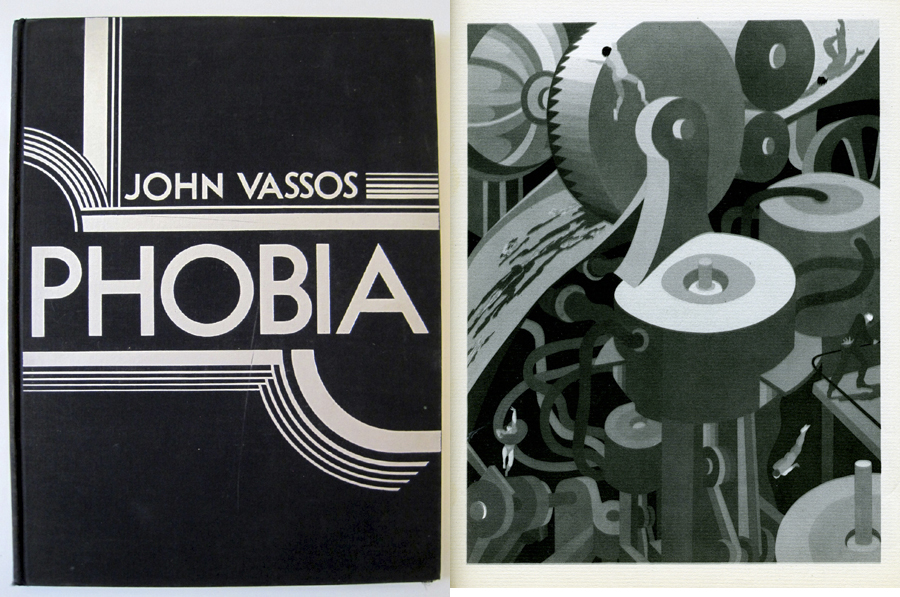All incoming students in The New School Parsons History of Design and Curatorial Studies (MA) Masters’ Degree Program at the Cooper Hewitt, Smithsonian Design Museum take an object and research based class called Pro-Seminar. This course trains students in conducting formal analyses, writing catalog entries, and making visual presentations that require students to conduct and integrate primary and secondary source research. Students select one work from the museum collection to study during this first semester, that ”work” can be a book from the Cooper Hewitt Design Library presented by staff during curatorial orientations. Phobia was chosen as a Pro-Seminar topic by Joseph T. McPartlin in the fall of 2015.

A limited edition release written and illustrated by John Vassos, Phobia is a study of modernity through its use of Art Deco iconography and its concern with the conditions in which phobias develop. Vassos developed a distinct hard-lined black and white opaque watercolor technique that became his signature style. He honed this style in his illustrations for books and advertising. It was a promising embrace of the machine age expressed though stylization of imagery instead of realism. The result of this was architecturally inspired, graphic, geometric, and stylized representations. The cover of Phobia employs this sense of modernity through its sharp rectilinear and curvilinear lines, flowing into each other and abruptly stopping, and the silver mechanical sheen of the geometric shapes within a deep black background. It is confined and restricted within the space designated by architectural lines. Art Deco optimistically embraced modernity within its streamlined forms and geometric stylization.

Vassos subverts Art Deco’s optimism of modernity by employing it as a style to examine phobias as a negative effect of the modern world. Representations in Phobia of conditions such as fear of mechanized and mass production in Mechanophobia, new technology of transportation in Dromophobia, and other social and technological changes are linked to fears of modern man.
John Vassos dedicated the book to his friend, Harry Stack Sullivan, known as America’s Sigmund Freud. Sullivan was indispensable in the creation of Phobia as he approved the original outline of the book. Sullivan was impressed by Vassos’ layman’s perspective and stated that it was remarkable how closely Vassos’ illustrations delineate the true nature of Phobias.

Phobia presents both Art Deco and phobias as products of modernity. Vassos utilizes Art Deco’s style and iconography yet, employs it as a subversive comment on modernity by aligning it with the conditions leading to phobias. For additional information on Phobia, see Cooper Hewitt Museum Object of the Day blog on February 12, 2016, which highlights the Pro-Seminar paper by Joseph T. McPartlin.

Be First to Comment